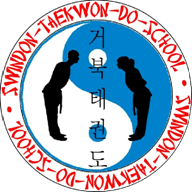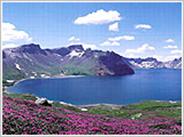



|
What I’ve discovered
It is interesting that in this pattern meaning the Chinese theory of Yin-Yang, or opposites is evident. As this pattern is learned by the White Belt at the beginning of his journey to earn the coveted Black Belt, we can begin to see how this theory permeates through Eastern philosophy. The symbol which represents Yin-Yang can be found on the Korean national flag, T’aeguk-ki, which also uses symbols representing the opposites of Heaven and Earth, Fire and Water. Chon-Ji also has another spiritual interpretation as Lake Chon-Ji is said to be the spiritual home of the Korean people, as Korea herself traces her beginnings to Chon-Ji so the student begins with this pattern. It is never easy to translate Korean words into English, but ‘Chon’ can mean Heaven while ‘Ji’ can mean Earth. The two words combined together, however can have slightly different meanings, Lake Chon-Ji is the ‘Heavenly’ Lake, located in a crater on Paektu-San (White Headed Mountain also Ever-White Mountain) located on the border between China and North Korea, which was the first residency of the legendary Dan-Gun before he established his capital at Asadal (now Pyongyang) in 2333 B.C.
Lake Chon-Ji said to be where Heaven and Earth meet due to the reflection on the water’s surface.
(Because of the looseness of pronunciation and the two different systems of Romanising the Korean alphabet this can be Baekdu Mountain, T can be replaced with D just as P can be replaced with B and K with G, please keep this in mind when you research other sites)
For sources of this information please see the bibliography section of the site.
|
|
In his encyclopaedia General Choi told us: Chon-Ji literally means Heaven and Earth. In the orient it is interpreted as the creation of the world or the beginning of human history, therefore it is the first pattern played by the beginner. It comes in two equal parts, one to represent Heaven and the other Earth. |
